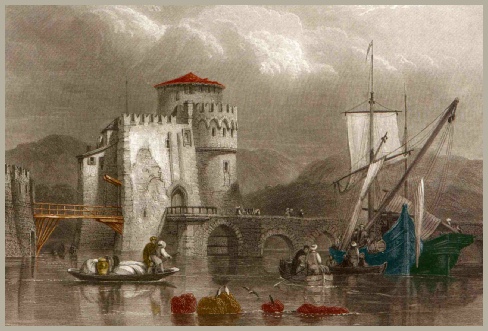Department of Physics, Aristotle University of Thessaloniki, 54006, Thessaloniki, Greece
Chalkis, the capital of Evia, was one of the most important places in ancient Greece.
It was named after its famous copper works, since in Greek chalkos means copper.
Homer referred to Chalkis in his enumeration of the Greeks who participated in the
expedition against ancient Troy.
Chalkis is built on the narrowest sea passage which separates the island of Evia
from the mainland of Greece. The passage is called Euripus. In ancient Greek the
term euripus meant straight (channel). In the 19th century the bridge shown in the
picture above was built on Euripus. This bridge was destroyed at the end of that
century during the widening of the channel.
Strong tides occur in the channel and also the rare tidal phenomenon of the sea water
flowing for 6 hours to the north and for 6 hours to the south with a 9-10min pause.
The speed of water is 7-9 Km/hour. This happens for 23-24 days per month while the
rest 5-6 days the direction of the flow and the speed of the water are irregular.
This remains under investigation.
Chalkis is the birthplace of many important men. In ancient times the rhetorician
Iseos and the painter Timagoras and in 1904 the well known music composer Skalcotas
were born there. Aristotle died in Chalkis in 322 BC.
Today Chalkis is a modern city with a nice promenade which is decorated by several
renovated buildings like the City Hall, the Red house and others (see pictures bellow).
Chalkis also has a castle which was built in 1608 on the mainland, on the hill opposite
the city, during the Turkish occupation of Greece.
Euripus bridge in 1835. Engraving by Stanfield & Finden, designed by Helpman, sold
by Tilt gallery, London
Euripus channel and bridge today.

















